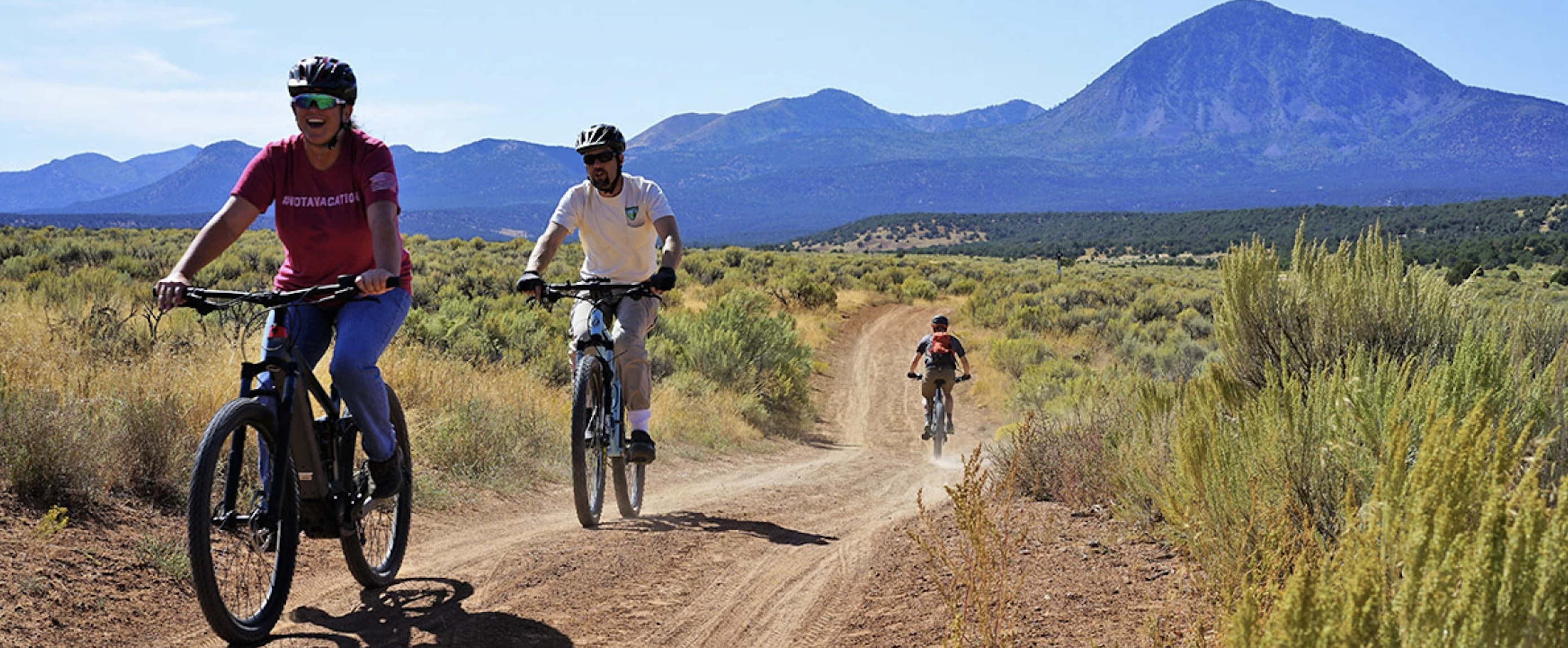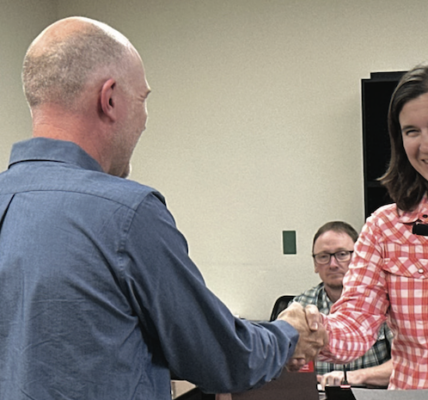
By Billy Arnold
Jackson Hole News&Guide
Via- Wyoming News Exchange
JACKSON — A few years ago, when Mark Ditmer found himself on a game trail in the Bridger-Teton National Forest, holding electronic equipment over his head, the first thing he thought of was a 1989 rom-com.
“I remember holding up the boombox speakers and saying I was John Cusack from ‘Say Anything,’ ” said Ditmer, a quantitative research ecologist from the U.S. Forest Service’s Rocky Mountain Research Station.
Unlike Cusack’s character, Lloyd Dobler, Ditmer wasn’t holding up the boombox to woo a high school valedictorian. And he wasn’t playing Peter Gabriel’s 1986 hit “In Your Eyes.” Instead, Ditmer was trying to get the custom-made boom box to work and play sounds of humans recreating as animals approached.
Linked to nearby wildlife cameras intended to innocuously capture wildlife reactions, the boom box was a key part of an experiment to better understand how animals respond to humans in the wild.
A few years after completing the experiment, Ditmer and his colleague Kathy Zeller — a research biologist with the same Forest Service outfit — now have an answer to that question. The sounds of recreation cause animals to flee and avoid areas they’d otherwise frequent, like game trails.
In a study published in the July 8, 2024 “Current Biology,” Zeller, the lead author, and Ditmer outlined their findings. Ashley Egan, habitat biologist for the Bridger-Teton National Forest, was also a co-author.
Wildlife were 4.7 times more likely to flee the sounds of recreation than they were natural noises played from a speaker. Animals exposed to the sounds of recreation were also vigilant for 2.9 times longer. The scientists found that animal abundance at their research sites was 1.5 times lower the week after any recreation noise had been played.
“I was surprised that the response was so strong,” Zeller told the Jackson Hole Daily.
“The triggers we had, over a two-week period, equated to roughly 1.5 recreation events a day,” she added. “So that would be maybe one or two groups using a trail a day. That was very low frequency.”
Biologists have begun amassing a collection of research showing that recreation, generally thought to be a low-impact way to experience the natural world, can significantly disturb wildlife and alter their behavior.
In Yellowstone National Park, biologists found that grizzly bears are far more likely to avoid areas reserved for bears when seasonal closures are lifted and humans are present.
A global review of 274 articles about recreation’s impacts on wildlife found that non-motorized recreation was 1.2 times more likely to impact animals than motorized recreation. And, in an oft-cited paper connecting human disturbance to wildlife health, researchers in Colorado have shown that human presence can reduce elk calving rates.
The Bridger-Teton National Forest, where Zeller and Ditmer conducted the study, is a hotbed of human recreation. Its 3.4 million acres flank Jackson Hole, border Pinedale and Kemmerer, and attract frequent visitors from metropolitan areas like Salt Lake City, Utah.
Since 2020, forest managers, the Teton Conservation District and local nonprofits have sought to better understand how people recreating impact elk, deer, bears and other wildlife dwelling in the national forest. One of their flagship projects is the “Neighbors to Nature” project focused on understanding how wildlife use the busy Cache Creek area. Another is an ongoing study, using aggregated cell phone data, to understand how people use the forest.
Zeller and Ditmer’s study is a third piece.
Linda Merigliano, the Bridger-Teton’s longtime recreation manager, has helped coordinate the larger effort to study recreation’s impact on the forest. With forest planning on the horizon, a process through which the Bridger-Teton will rethink how it manages its millions of acres, she originally hoped the studies would provide clear thresholds to help managers determine how to manage recreation in wildlife habitat.
“We’re not finding that,” Merigliano said. “It’s just more complex.”
Zeller and Ditmer’s study shows some of that complexity. While it is not shy about describing the disturbances humans cause as “negative,” it also shows that species react differently to recreation — and that specific types of recreation cause more significant impacts to wildlife than others.
Of all the species Zeller and Ditmer caught on camera, elk were the most sensitive to recreation noise — seven times more likely to flee after hearing recreation noise than after hearing nature sounds or no noise, the study’s two controls. Black bears and pronghorn were similarly skittish. Cougars were unfazed.
“Cougars didn’t really change course,” Ditmer said. “If they did really alter their behavior, it was often to go closer to the speakers and figure out what was going on.”
Zeller and Ditmer found that the sound from large groups of hikers and large groups of mountain bikers were the most likely to disturb wildlife. Small groups of runners and hikers were the least impactful.
The study does not, however, connect those disturbances to animal health or population dynamics.
It also focuses solely on what Zeller and Ditmer referred to as “novel exposures,” or exposures to the sounds of recreation in areas where animals aren’t expecting it. In the future, the scientists want to better understand how animals react to sounds of human recreation in areas where they are expecting it.
In the current study, the sounds Zeller and Ditmer played were triggered when an animal approached the camera, but slowly ramped up to mimic the sound of a hiker or biker approaching while limiting animals’ startle response. To test how habituated animals react to recreation, the scientists are doing more work this summer, setting up cameras and boom boxes to play sounds mimicking high use and low use trails.
“Do animals change the time of day they’re going through this game trail?” Ditmer said. “Maybe animals start being more nocturnal in this spot. Maybe they avoid the site for a while and then come back.”
But for now, the study has shown that animals don’t react like Ione Skye’s ingenue, Diane Court, in “Say Anything.” Play human sounds from a boombox, and they won’t come running — they’ll go the opposite way.
Unless, apparently, they’re your typical Teton area cougar.





